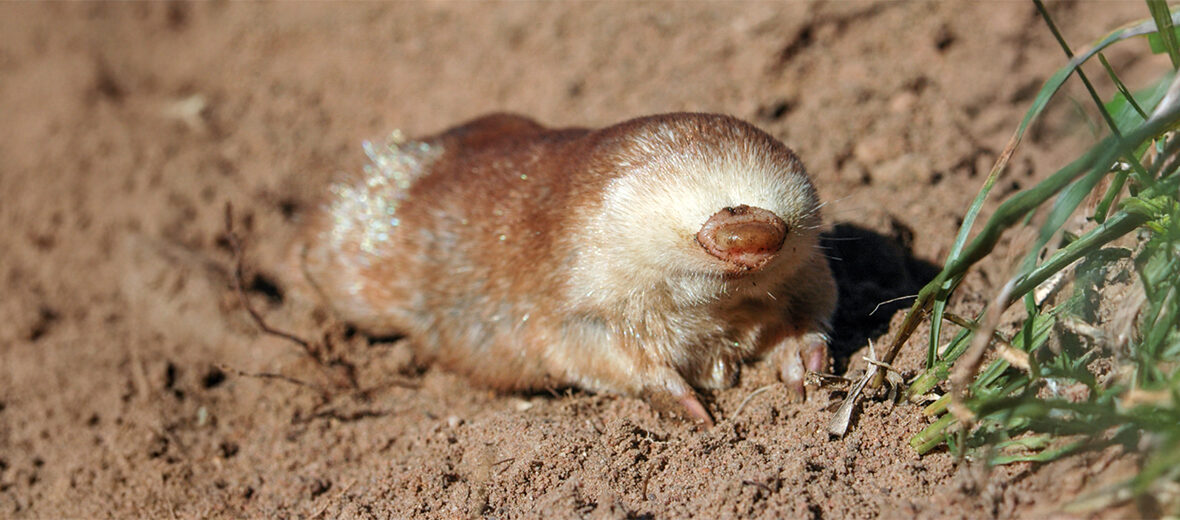
The Juliana’s golden mole is a golden mole species endemic to 2 small locations in South Africa. These critters face the threats of habitat loss and destruction at the hands of residential and commercial developments, farming, ranching, mining, and quarrying; and habitat division at the hands of roads and railroads, which can also result in vehicle strike (being hit by vehicles). The IUCN lists these moles as Endangered. Their population trend is listed as unknown.
First the Stats…
Scientific name: Neamblysomus julianae
Weight: Up to 2.65 ounces
Length: Up to 3.94 inches
Lifespan: Unknown
Now on to the Facts!
1.) The common name of Juliana is derived from Juliana Meester, the wife of the South African zoologist who named this species.
2.) Like so many other mole species, they possess ears and eyes, but they are actually blind.
3.) These moles are solitary and only come together to mate.
4.) Various insects, earthworms, snails, and slugs are all happily feasted upon.
5.) They are both crepuscular (active at dawn and dusk) and nocturnal (active at night), with most of their activity taking place at night.
But wait, there’s more on the Juliana’s golden mole!
6.) These moles exhibit torpor daily during both the morning and early afternoon.
7.) Females birth up to 2 young, aka pups.
Did you know…?
Due to habitat fragmentation, these critters face obstruction to their movement; this typically results in in-breeding which increases the possible risk of extinction.
8.) They prefer habitats with good tree cover along with hard, grainy/sandy, well draining soil.
9.) Studying these critters is difficult, at best, due to their underground lifestyle and the challenge of even finding the openings to their burrows.
10.) Most of their populations are on protected land but more effort towards habitat protection is an important step in conserving Juliana’s golden mole populations.
Now a Short Juliana’s Golden Mole Video!
This video talks about golden moles in general.
Be sure to share & comment below! Also, check out the Critter Science YouTube channel. Videos added regularly!

Want to suggest a critter for me to write about? Let me know here.
Some source material acquired from: Wikipedia & IUCN
Photo credit: Craig R. Jackson



